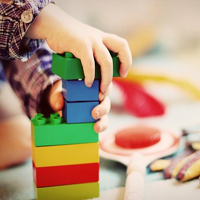Application of a non-pharmacological technique in addition to the pharmacological protocol for the management of children’s preoperative anxiety: A 10 years’ experience

Submitted: 28 May 2020
Accepted: 11 February 2021
Published: 19 March 2021
Accepted: 11 February 2021
Abstract Views: 6436
PDF: 1062
HTML: 66
HTML: 66
Publisher's note
All claims expressed in this article are solely those of the authors and do not necessarily represent those of their affiliated organizations, or those of the publisher, the editors and the reviewers. Any product that may be evaluated in this article or claim that may be made by its manufacturer is not guaranteed or endorsed by the publisher.
All claims expressed in this article are solely those of the authors and do not necessarily represent those of their affiliated organizations, or those of the publisher, the editors and the reviewers. Any product that may be evaluated in this article or claim that may be made by its manufacturer is not guaranteed or endorsed by the publisher.
Similar Articles
- Cosimo Bleve, Maria Luisa Conighi, Valeria Bucci, Lorenzo Costa, Salvatore Fabio Chiarenza, Torsion of huge epididymal cyst in a 16-year-old boy: case report and review of the literature , La Pediatria Medica e Chirurgica: Vol. 40 No. 1 (2018)
- Mario Lima, Dora Persichetti-Proietti, Neil Di Salvo, Claudio Antonellini, Michele Libri, Beatrice Randi, Michela Maffi, Tommaso Gargano, Giovanni Ruggeri, Vincenzo Davide Catania, The APpendicitis PEdiatric (APPE) score: a new diagnostic tool in suspected pediatric acute appendicitis , La Pediatria Medica e Chirurgica: Vol. 41 No. 1 (2019)
- Sara Uccella, Agnese De Carli, Ida Sirgiovanni, Paola Schiavolin, Giuseppe Damiano, Beatrice Ghirardi, Francesca Maglioli Carpano, Laura Bassi, Silvana Gangi, Odoardo Picciolini, Monica Fumagalli, Fabio Mosca, Survival rate and neurodevelopmental outcome of extremely premature babies: an 8-year experience of an Italian single neonatal tertiary care center , La Pediatria Medica e Chirurgica: Vol. 37 No. 3 (2015)
- Carmine Noviello, Mercedes Romano, Alfonso Papparella, Andrea Ciavattini, Ascanio Martino, Giovanni Cobellis, The isolated tubal torsion: an insidious pediatric and adolescent pelvic urgency , La Pediatria Medica e Chirurgica: Vol. 40 No. 2 (2018)
- Alfonso Papparella, Giovanni Cobellis, Laura De Rosa, Carmine Noviello, Transscrotal orchidopexy for palpable cryptorchid testis: follow-up and outcomes , La Pediatria Medica e Chirurgica: Vol. 40 No. 2 (2018)
- Francesca Destro, Giorgio Selvaggio, Federica Marinoni, Andrea Pansini, Giovanna Riccipetitoni, High-pressure balloon dilatation in children: our results in 30 patients with POM and the implications of the cystoscopic evaluation , La Pediatria Medica e Chirurgica: Vol. 42 No. 1 (2020)
- Cosimo Bleve, Maria Luisa Conighi, Diego Biondini, Pier Luca Ceccarelli, Leonardo Giarraputo, Sergio Savastano, Salvatore Fabio Chiarenza, Thoracoscopic treatment of a rare bilateral extralobar lung sequestration in a 3-years old girl , La Pediatria Medica e Chirurgica: Vol. 42 No. 2 (2020)
- L. Costa, S.F. Chiarenza, S. D’Agostino, L. Musi, Gastric atresia, diaphragmatic hernia, and gastroesophageal reflux: a rare malformation requiring a multiple approach , La Pediatria Medica e Chirurgica: Vol. 34 No. 5 (2012)
- Lina Budiyarti, Nur Agustini, Happy Hayati, Ria Utami Panjaitan, Nuraini Hakim, Effectiveness of web-based play therapy intervention in supporting the development of children with attention deficit/hyperactivity disorder , La Pediatria Medica e Chirurgica: Vol. 45 No. s1 (2023)
- Nurti Yunika Kristina Gea, Nani Nurhaeni, Allenidekania Allenidekania, Blow pinwheels improve oxygen saturation of preschool children with post pneumonia in outpatient pediatric departement , La Pediatria Medica e Chirurgica: Vol. 43 No. s1 (2021)
<< < 5 6 7 8 9 10 11 12 13 14 > >>
You may also start an advanced similarity search for this article.

 https://doi.org/10.4081/pmc.2021.235
https://doi.org/10.4081/pmc.2021.235




